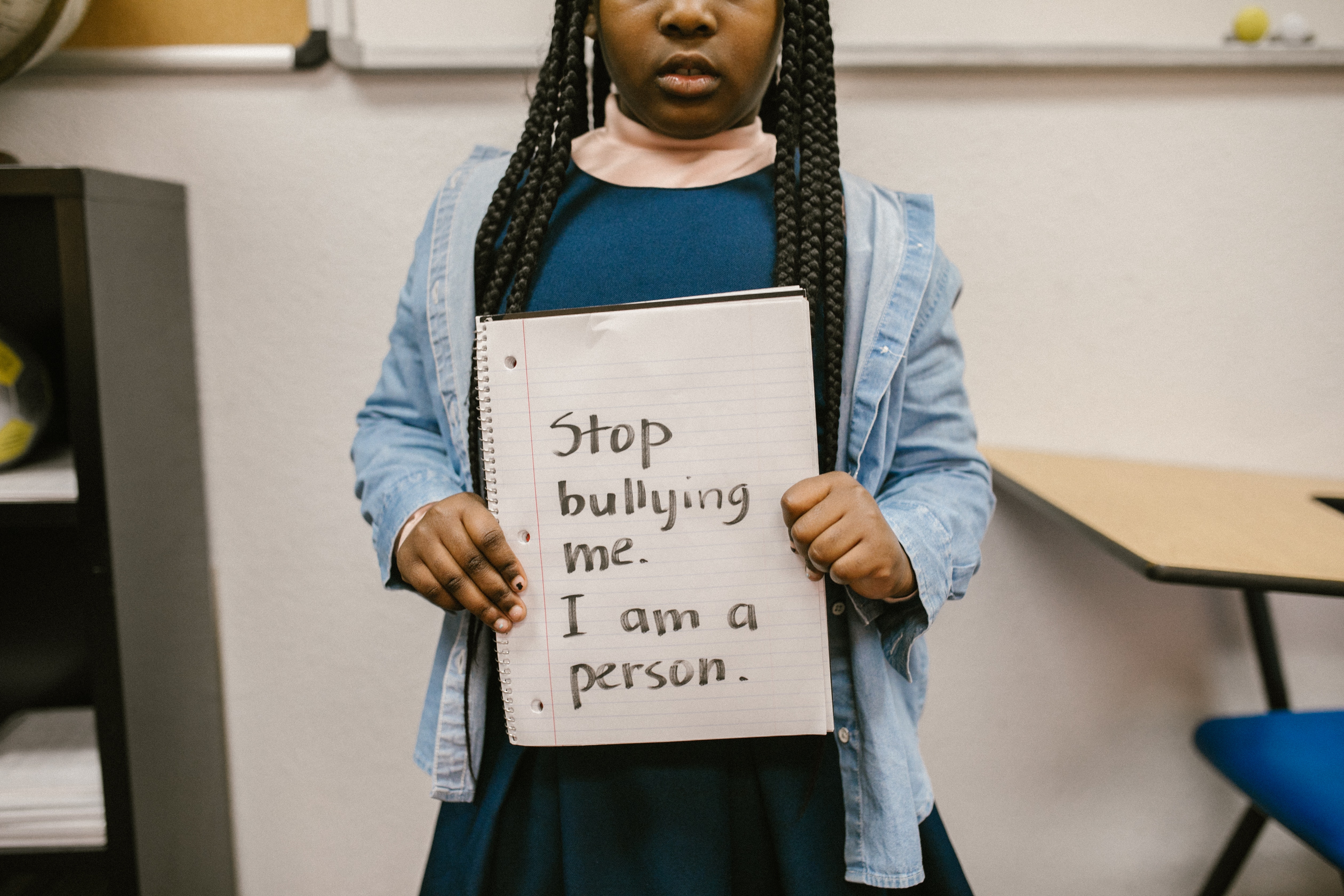
Tens of thousands of children fear going to school every day because they face bullying. Bullying is a significant problem among children and carries serious, lasting consequences. A staggering 90% of school-aged children in grades 4-8 claim to be victims of bullying. About 20% of teens aged 12-18 are subject to bullying – and, with gadgets at many kids’ disposal, bullying happens more frequently online or via text message than it does in person. On the administrative side, over 70% of school staff have witnessed bullying in the United States.
A victim of bullying is likely to suffer from low self-esteem, depression, physical injuries, and social maladjustment – all of which can significantly outlast an instance of bullying. There is a well-known link between bullying and suicide in teens and young people. A recent study found that those who are bullied are far more likely to have suicidal thoughts than those who are not bullied – however, both victims and bullies alike are at an increased risk of suicidal thoughts. Persistent bullying can cause a child to feel depressed, excluded, rejected, and hopeless. Cyberbullying is no exception and is a sneakier form of emotional abuse that both the victim and perpetrator can more easily conceal if they want to. Harassment and bullying are linked to 75% of school shooting incidents, which are expressions of revenge more often than not.
In a culture that is increasing its literacy around mental health, we see great urgency around bringing a stop to bullying. While a bit of foul play and toughness was once considered a normal part of growing up, it is clear to mental health providers and child wellness professionals that the consequences of bullying are far too dire to sweep under the rug.
Bullying can take the form of teasing, mocking, humiliation, threats, or taunts that draw upon a child’s racial or sexual identity. Bullying can also be physical, involving beating someone up, stealing from them, or spitting on them. Bullying can look like gossiping, rumors, threats, and exclusion from groups on a higher social level.
This month, we observe National Bullying Prevention Awareness month to address the severity of bullying from a mental health perspective and empower people to take a stand against bullying. In the classroom, this means cultivating a nurturing, supportive environment where everyone’s voice is heard, people feel included, and there is space to be vulnerable. At Maryvale, our curriculum is built around interpersonal learning, talking things out, and being inclusive. We are dedicated to communicating with families whenever we see potential risks surface among our students or youth in our after-school program.
Parents can be proactive in taking a stand against bullying by talking openly with their kids about how things are going at school, who their friends are, and how they communicate using technology. Try asking simple, open-ended questions to get an unfiltered picture of your child’s experience. Without harshness, offer your feedback on how kids can be inclusive and caring towards others or how they might be able to advocate for a classmate who is a victim of bullying. Modeling good behavior – such as intervening during a needless conflict in the household or community – is one of the best ways to show your children how they can have a positive impact.
In a moment of conflict, here are a few ways anyone – young person, parent, classroom personnel, or anyone at all – can intervene to stop bullying in the act:
- Don’t react. Bullies are aggressive children, and they crave a strong reaction from the person they’re attacking. By acting unemotional in a moment of name-calling or verbal abuse, a victim denies them the satisfaction they’re looking for. The bully will probably get tired of being cruel, and the victim will emerge more resilient.
- Tell them to stop. This is particularly important when bullying gets physical. A bully will be surprised when someone stands up to them. As a bystander or victim, letting the bully know that you are not intimidated by them and want them to stand down is a proven way to nip bullying in the bud. Plus, it builds confidence to put an end to unnecessary harm.
- Diffuse the situation. Victims or people who intervene can confuse a bully by acting silly, telling a joke, or changing the subject. Much like ignoring the bully, bringing lightness to the situation demonstrates confidence and a lack of fear – which is the opposite of what a bully wants to see.
- Find good defenses. If a child is dealing with frequent attacks by a bully, it can be helpful to plan some escape strategies. This might mean sticking closely with a friend or two. An isolated person is more likely to be bullied than someone who has friends around them. Knowing how to defend themselves is empowering for children. Self-defense need not involve fighting back – instead, focus on escape strategies, making a lot of noise to draw adults’ attention, and deflecting physical aggression.






